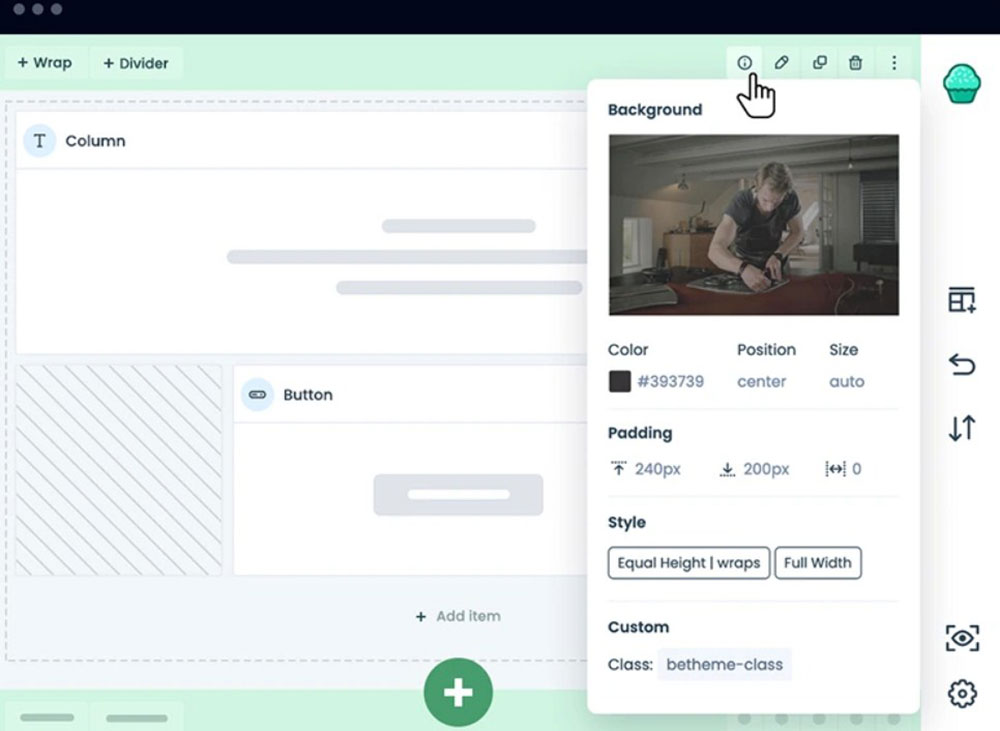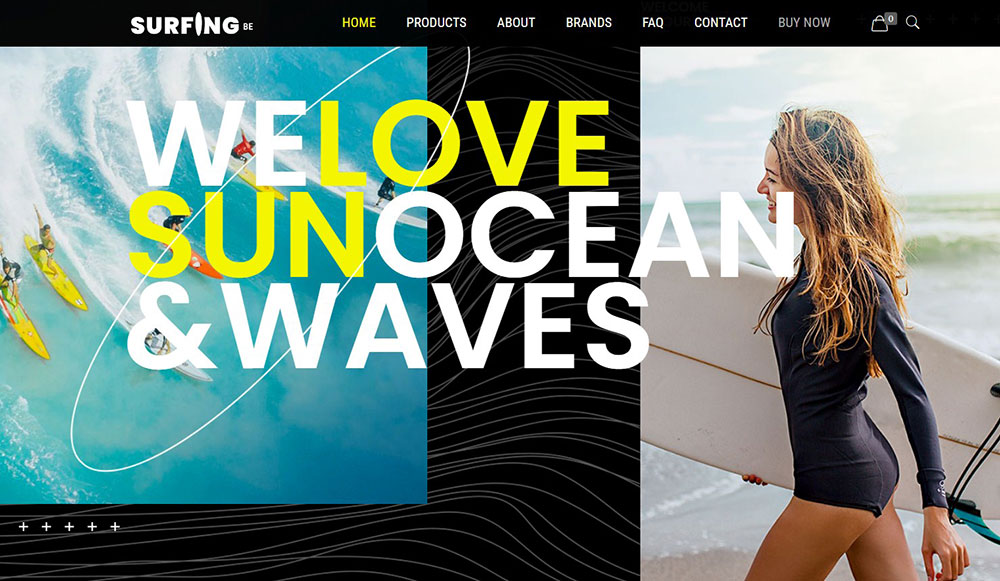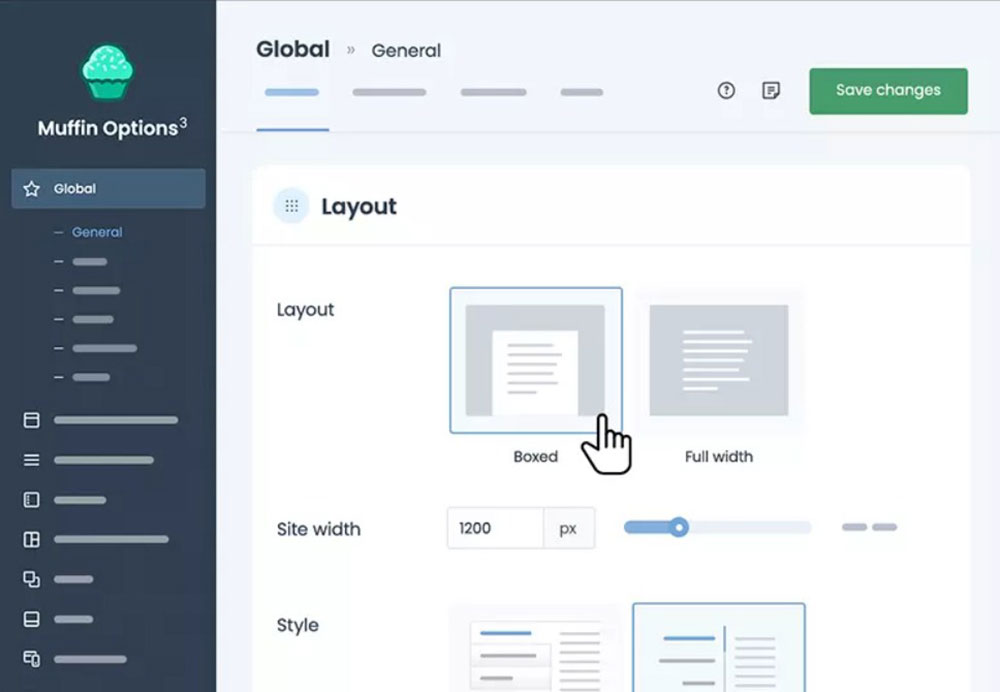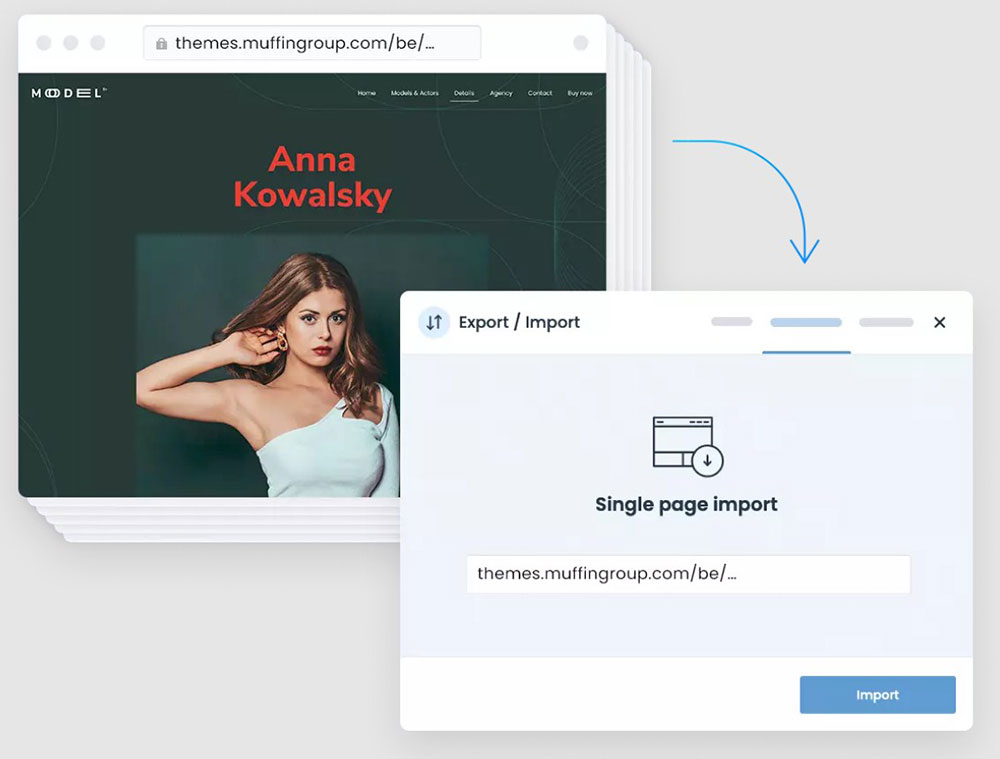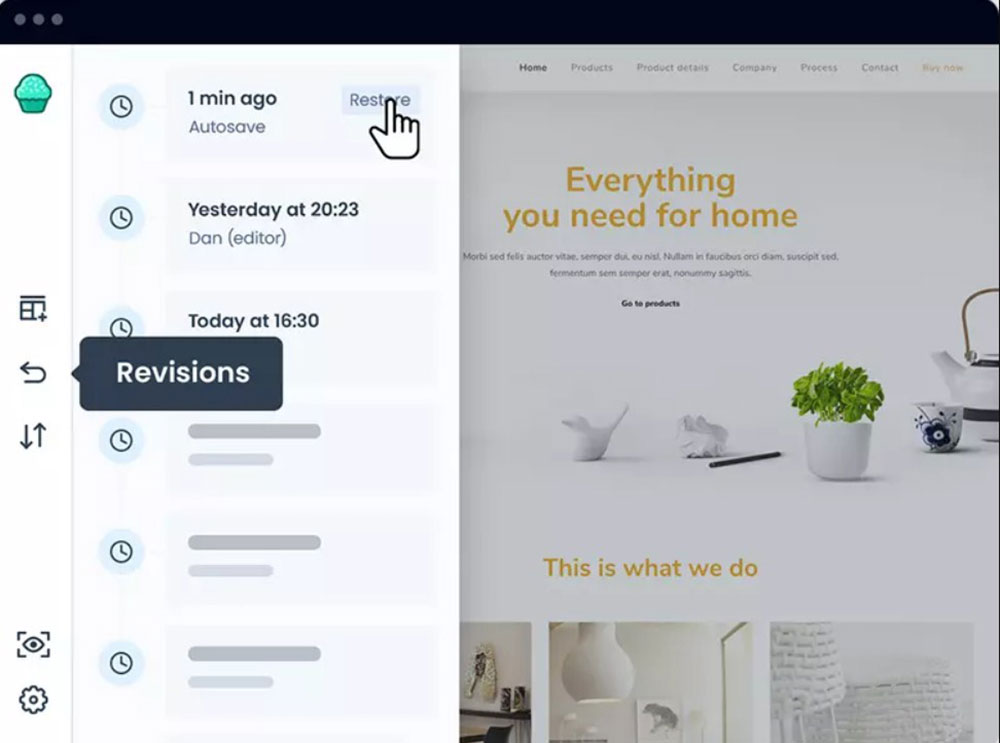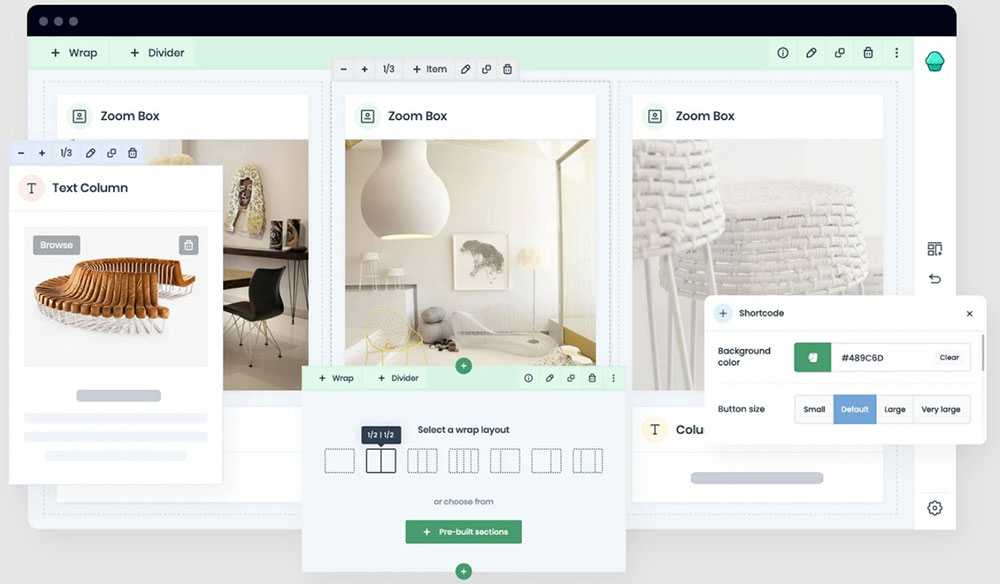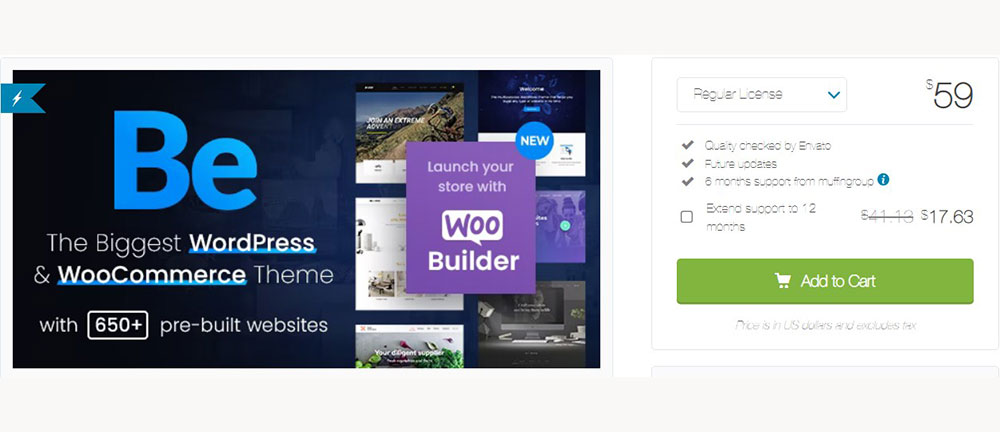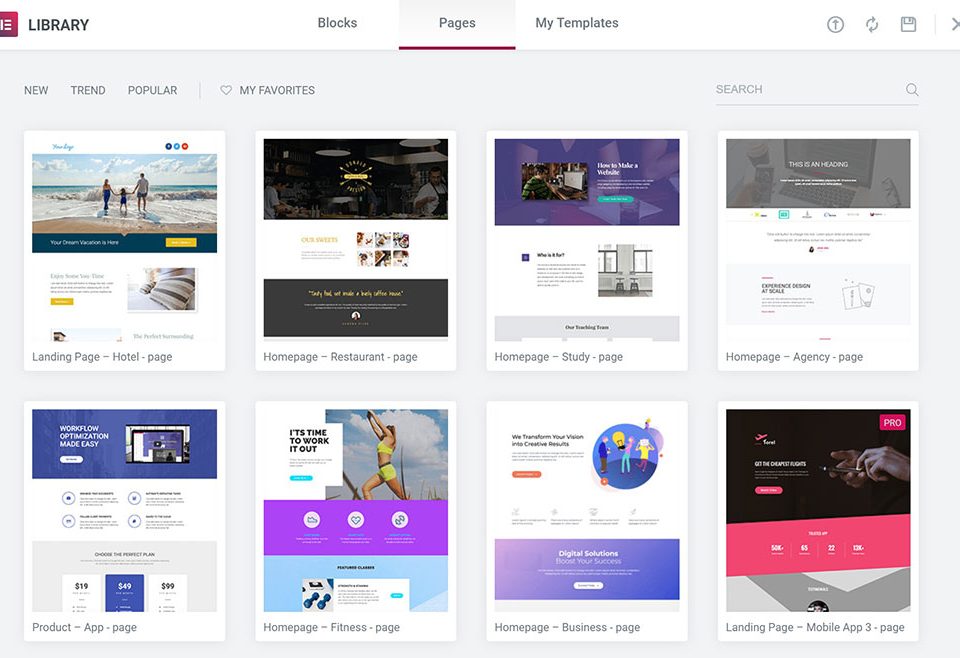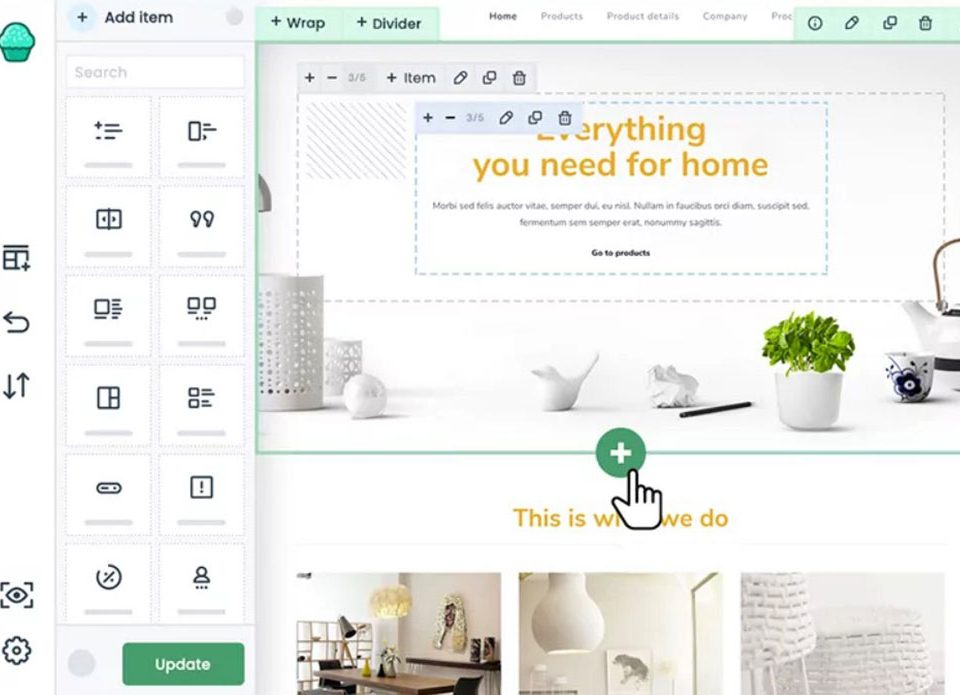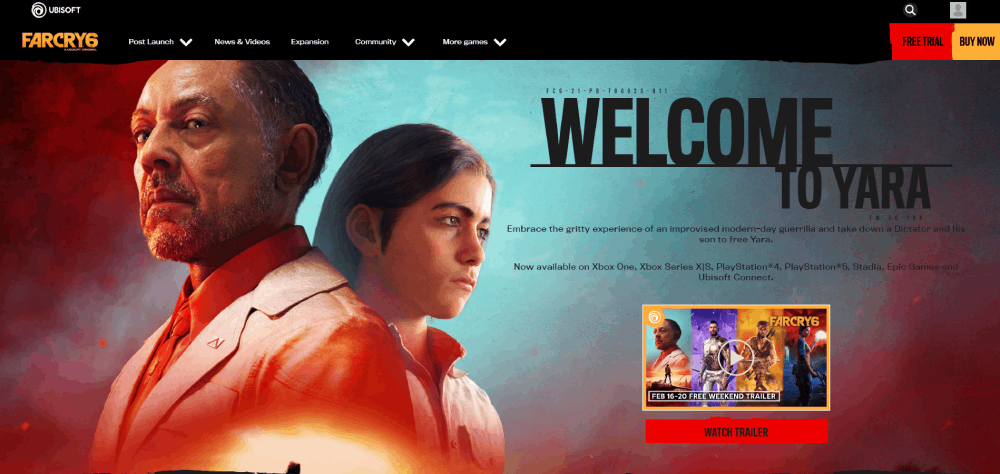
Gaming Website Design Examples to Inspire You
June 26, 2024
Beautiful Website Design Examples That Will Inspire You
July 1, 2024Designing a website has never been more exciting—or more challenging. With tools like Elementor, Divi, and BeBuilder, we have at our disposal advanced WordPress page builders that bring any design vision to life. But how do you choose between them?
Dive into this article, where I’ll dismantle the strengths, features, and nuances of each of these popular drag-and-drop builders. Whether you're curious about Elementor templates, the Divi builder review, or the latest BeBuilder features, we’ll cover it all. This isn't just about visual editors; it's about understanding the intricacies of design flexibility, responsive design, and plugin compatibility.
By the end, you'll grasp the unique offerings of each tool—front-end builders, custom widgets, and A/B testing features included. Ready to elevate your website design? Let's explore the dynamic worlds of Elementor, Divi, and BeBuilder.
Elementor vs Divi vs BeBuilder
| Feature | Elementor | Divi | BeBuilder |
|---|---|---|---|
| Ease of Use | Intuitive drag-and-drop interface | User-friendly visual builder | Highly intuitive, drag-and-drop |
| Template Library | Extensive selection of templates | Rich pre-made layouts | Expansive, customizable templates |
| Customization | Advanced styling options | Comprehensive design controls | Superior flexibility and control |
| Widgets | Numerous custom widgets | Varied content modules | Wide array of custom widgets |
| Third-Party Integration | Good plugin compatibility | Supports many third-party plugins | Seamless integration capabilities |
| Responsive Design | Mobile and tablet previews | Optimized for all devices | Exceptional responsiveness |
| SEO Tools | Built-in SEO optimization | Integrated SEO features | Advanced SEO strategies supported |
| Performance | Optimized for speed | Lightweight code structure | Highly optimized for performance |
| A/B Testing | Supports third-party tools | Built-in A/B testing | Easily integrates A/B testing tools |
| Custom CSS Control | Extensive CSS capabilities | Comprehensive CSS customization | Full custom CSS control |
| Pricing | Flexible pricing tiers | Subscriptions available | Competitive pricing |
| Support & Community | Active community, good support | Robust support infrastructure | Outstanding support and resources |
Elementor
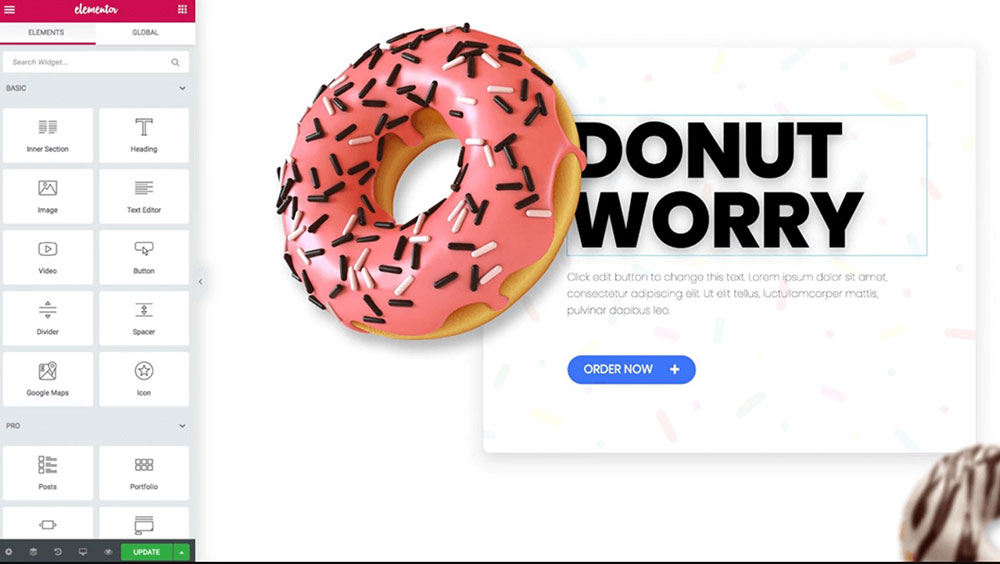
Elementor's history started only recently. But that hasn’t curbed its popularity, which has grown at a rapid rate.
According to WordPress, there are more than five million active installations of the free version alone. That makes it the most popular page builder available at the moment.
What is most remarkable about Elementor is its flawless visual interface.
This excellent interface comes with many practical styling options and other powerful features. The full theme builder capabilities are superb.
The premium Elementor Pro version offers much more than simple page editing features.
Divi Builder
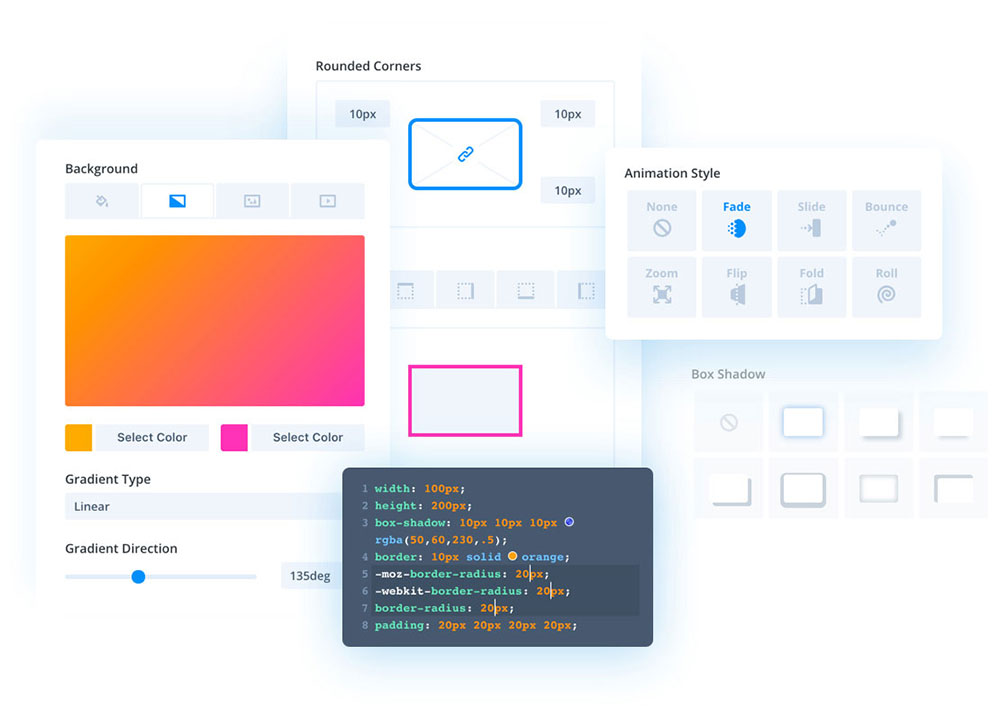
The software company Elegant Themes offers Divi Builder. This is another favorite premium page builder.
Most people know it as part of the Divi theme, but there is also a standalone version that works with any theme.
Divi Builder offers a visual frontend and a backend interface. Most users will find the frontend editor easier to work with.
With its latest 4.0 version, Divi offers a complete theme-building option. You can design templates, headers, footers, and much more with it.
This all makes Divi Builder a serious competitor against Elementor and BeBuilder.
BeBuilder
The Muffin Live page builder is a drag-and-drop builder. It comes as part of the popular Betheme WordPress theme.
The many design elements make it an excellent tool for designing and creating a website.
Muffin Live builder lets you customize every element of your page layout. You can divide it into different sections and set design elements for each one.
These elements include element width, background color, and so on.
The group behind Muffin Live also developed Betheme, a top seller on Themeforest. They rank high in lists of recommended authors, power elite authors, and monthly and weekly bestsellers.
This goes to show that they know how to deliver a solid product.
User Interface
The three page builders in this comparison have frontend page building options. Yet, they all use a different approach.
This section discusses that aspect of Elementor vs Divi vs Muffin Live in more detail. It shows the upsides and downsides of each and what makes each one special.
Elementor

Elementor's user interface is unique. Where Divi aims at minimalism, Elementor promotes accessibility. The result is an enjoyable user experience.
Before you start using the Elementor page builder you will need to obtain a WordPress theme.
If you create a new webpage in Elementor, it will direct you to the default editor of WordPress. After importing a theme, you can select 'Edit with Elementor' to start modifying it.
With the inline editing functionality, you can type and edit right in the live preview. This allows you to see what you are creating.
A drawback of Elementor is that it does not provide a wireframe view. However, it does have a handy navigator tool.
This gives an overview of the page's structure and you can rename elements so you can keep track of them. Divi has a very similar navigation tool.
Divi Builder
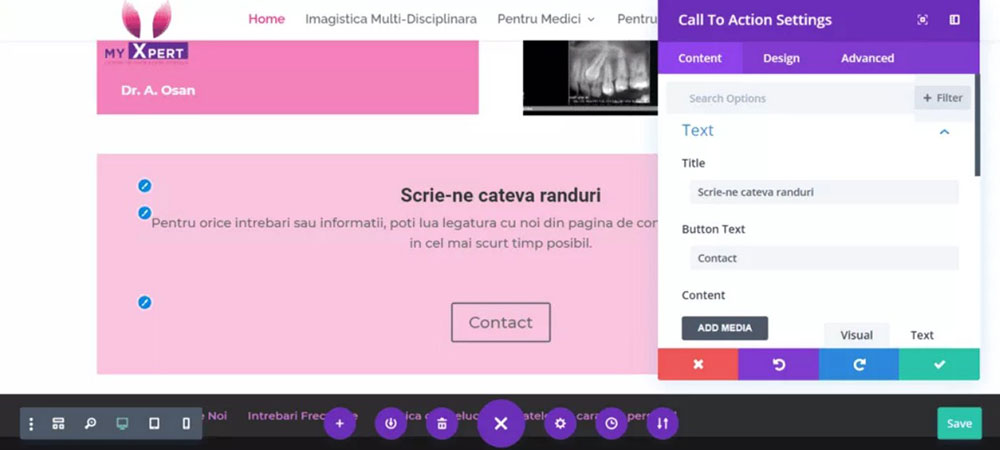
Divi Builder offers both visual frontend and backend editing options. The majority of people will only use the frontend editor.
So this review focuses on the visual option. But remember that there is also the option of doing everything by hand.
After installing the Divi builder plugin, you can create a new page.
The prompt will ask you to select the Divi Builder or the Default Editor. After selecting the Divi Builder, you get three options:
- Build from scratch
- Choose a premade layout
- Clone existing page
When you add a web page element you can click on it and choose from a range of settings. The options popup is movable and resizable so you can customize the interface to your liking.
Below is a picture that shows what the option popups look like. Divi uses these popups and floating buttons throughout, instead of the classic sidebars.
BeBuilder
The Muffin page builder offers suggestions for the most common features and functionalities. Hence, working with this builder plugin is very intuitive and fast.
Feature and functionality suggestions include:
- Home page layouts
- Internal page layouts
- Basic website structure
- Text and image placing
Of course, not everybody will like the standard options.
For instance, someone who sells surfing gear will want a webshop that works perfectly. But they may also want a carousel to spotlight their recent blog posts.
Elements
Elementor
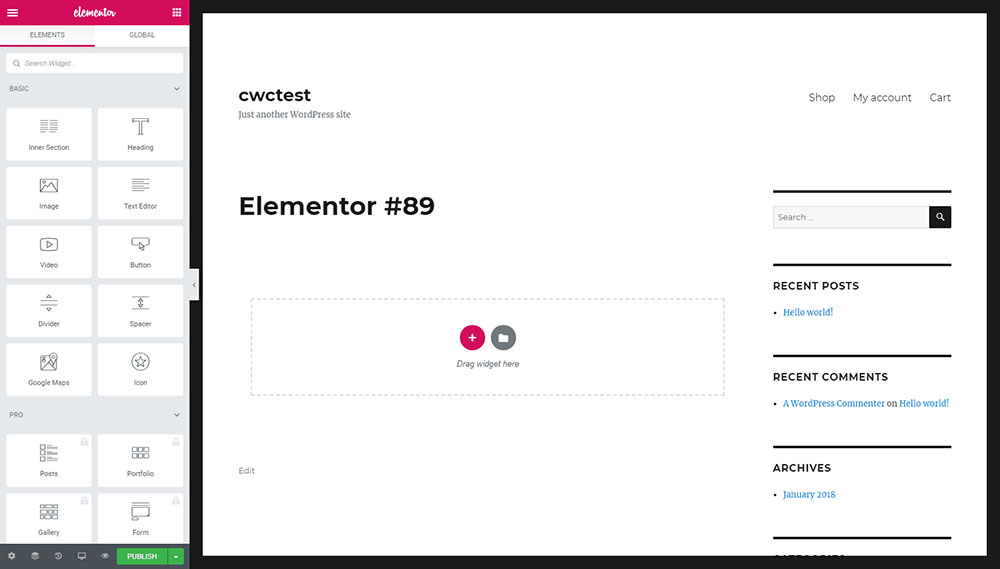
The Elementor page builder plugin offers three element types:
Sections
This is the main group. Within a section, you can add widgets and columns.
Columns
Columns add vertical divisions to a page. You can resize the columns by clicking and dragging with the mouse.
Widgets
Widgets include elements like images, text, and buttons. The free plugin version includes more than 40 standard widgets for creating designs.
The premium version gives access to more than 50 pro widgets.
Adding elements is very easy. It is only a matter of dragging and dropping a widget from the sidebar into the page area.
Divi Builder
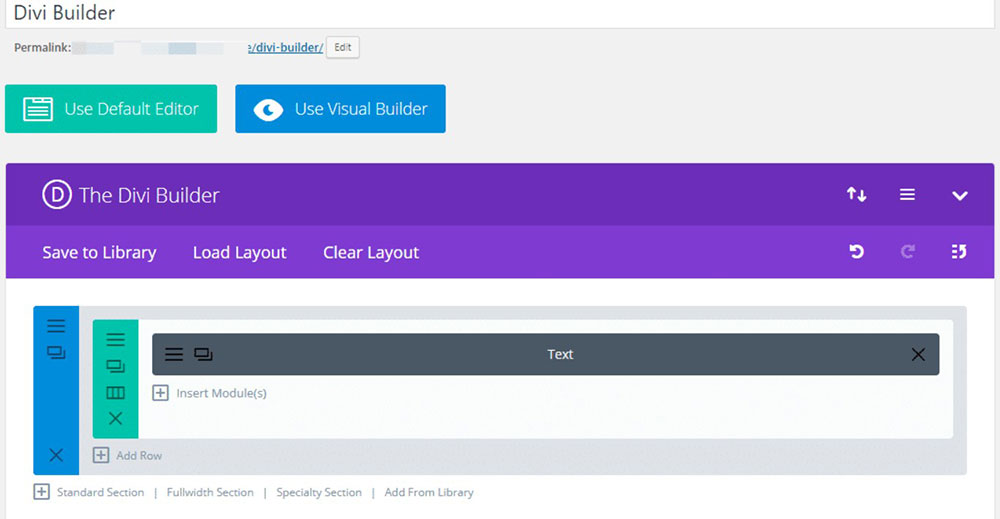
The Divi elements also have three main categories:
Sections
These are the containers where you can add elements.
Rows
These are dividers.
Modules
The actual content of the page.
You can use the Divi theme builder to create different sections. You could, for example, have three sections.
The first is an about section, the second a contact section, and the last the business location part.
The Divi row category is like the divider that many other page builders use. These rows make divisions within sections.
You need to specify how the row will divide the section into different areas.
Finally, the modules make up the visible content of the webpage. Examples of Divi modules are:
- Text
- Images
- Paragraphs
- Contact forms
- Maps
- Videos
BeBuilder
Many will enjoy Muffin Live's prebuilt sections. You can use them to create dynamic web pages of any kind.
When you add a new section, you may choose to create it yourself. Or you could select a prebuilt option, for example, a carousel section.
Prebuilt sections are not new. By using them you will not make something unique but you will save a lot of time.
You will not have to search for a design that matches yours or spend time making an existing design fit.
The Muffin Live page builder has a selection of more than 100 prebuilt sections. The builder plugin organizes them into categories like 'Contact' and 'Call to Action'.
You can utilize these prebuilt sections as frameworks for new sections. You can use the design, but repurpose it for anything that you want.
Templates
Elementor
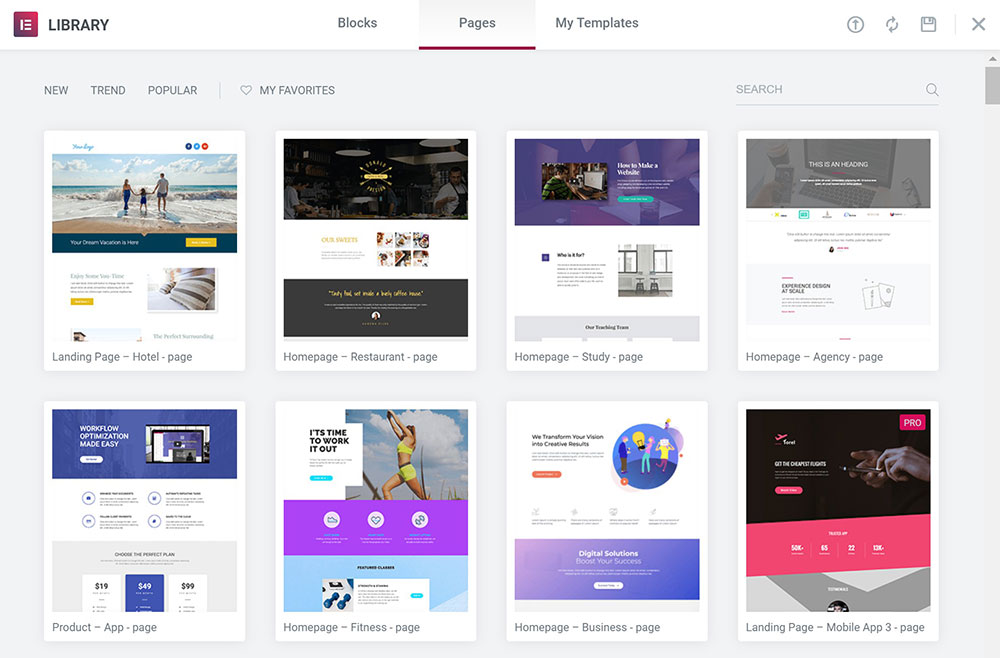
Elementor offers two different kinds of templates:
Page
These are complete page designs
Blocks
These are designs for separate page sections. There are, for example, blocks for 'Contact' sections.
The free version of Elementor provides more than 40 block templates and over 30 page templates. Elementor also allows you to save your website designs and use them later in other projects.
The Elementor Pro version gives access to the complete template library. This collection contains more than 50 premium widgets and over 300 pro templates.
Some of the page and block templates are available in template kits. These kits have a specific theme that help to create a complete website.
That is similar to the templates that Divi offers.
In March 2021 Elementor offered only 25 of these template kits. With new releases, this theme builder adds more kits to the collection.
Divi Builder
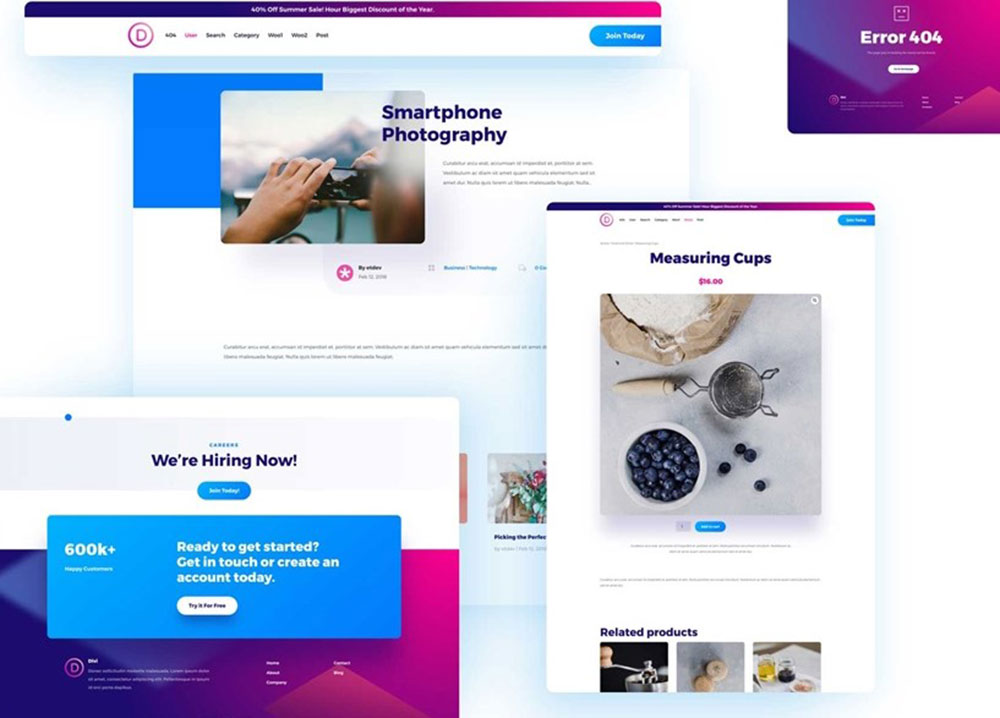
Since last year, Divi has more than 1,500 pre-built templates that the user can choose from. Searching through them is easy because they are organized into 199 layout packs.
These layout packs have specific themes for specific niche websites. You can find templates for homepages, contact pages, etcetera.
All these packs have a unified design. There are two different types of layout packs:
- Multiple layouts - packs for multiple pages.
- Single layouts - packs for single pages.
Divi allows you to save your website designs and reuse them in later web pages. You can even employ them in other website projects.
BeBuilder
Muffin Builder also offers templates, organized by custom post types.
You can import and export them within Muffin builder to different projects. It’s also possible to add your own content to them.
This page builder allows you to create your own templates and then apply them to any page you want.
However, editing an existing template is easier. Muffin Builder offers template designs for pages, portfolios, or posts.
Go to the Muffin Builder plugin and click the 'Templates' button at the bottom. Then select the template that you want to import.
You can apply the template either before or after creating the content. Or replace the template if it is not to your satisfaction.
Unique Features
Elementor
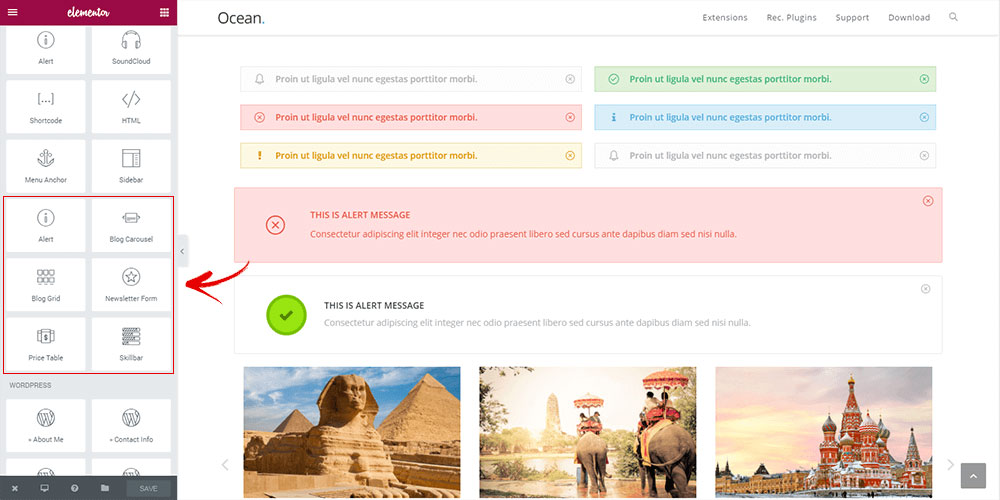
The Elementor page builder has some great features that make it stand out from the rest. Here are some of the best ones:
Global Widgets
You can use the same widget on different parts of a website. Then you can update them all at the same time by editing the global widget.
Popup Builder
Design and build popups for promos, email registration forms, opt-in, calls to action, etcetera. These are very useful for marketing purposes and you can place them anywhere on a website.
Clear Code
After deactivation, you will have a completely clean code.
Maintenance Mode and Coming Soon page
This allows you to design and create a personalized Maintenance/Coming Soon page.
Shape Dividers
An awesome design effect that adds structure to your web page. You can choose from the many SVG shapes in the Elementor interface.
Embed Anywhere
Use your saved Elementor templates anywhere you like. You can even reuse footer and sidebar templates.
Elementor offers the option to use shortcodes or sidebar widgets for easy embedding.
Divi Builder
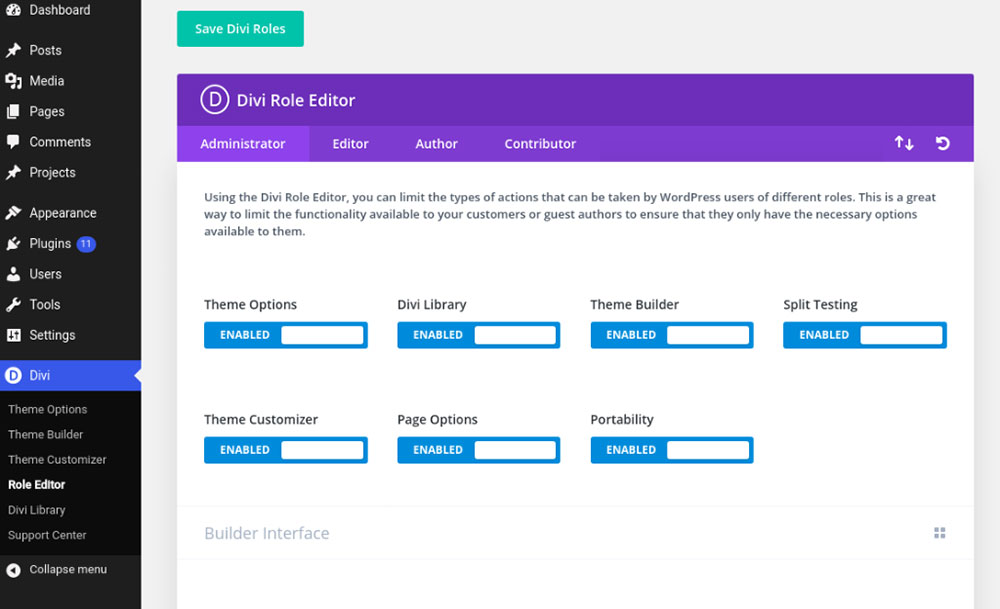
A unique feature of Divi Builder is the A/B testing. You can split-test different parts of a website to see how they work together.
For example, you could test all call-to-action buttons to see if they are working.
Other great features are:
Divi Role Editor
You can restrict access to certain Divi Builder functionalities or modules. This means that you assign access based on user roles.
Divi Builder includes two other page builders. But they do not offer the same wide range of role restrictions as Divi Builder.
Lock Elements
With this feature, users can lock specific modules. That prevents any accidental modification of finished modules.
Copy Module Style
Copy just the style of a module and apply it to another module. That saves copying the whole module and updating its content.
The Right-Click Option
This option is unique in the comparison of Elementor vs Divi vs BeBuilder. This is the only page builder offering this feature.
Be Builder
Muffin gives the user complete version control, offering four different save options. Among these are Publish and Update.
You will find these options in the Admin toolbar. Below is a more detailed discussion of these saving options:
Autosave
This feature saves a copy every five minutes of the page that you are editing. Even if your computer crashes you will lose a minimal amount of work.
Update
Muffin saves a copy of the page.
Revision
Save a special copy of the web page.
Backup
Store a copy of a page before restoring an older version. This way, you can create a history of the building process.
It also allows you to manage backups and easily go back to a previous version. That results in great improvements to your workflow.
Pricing
Elementor
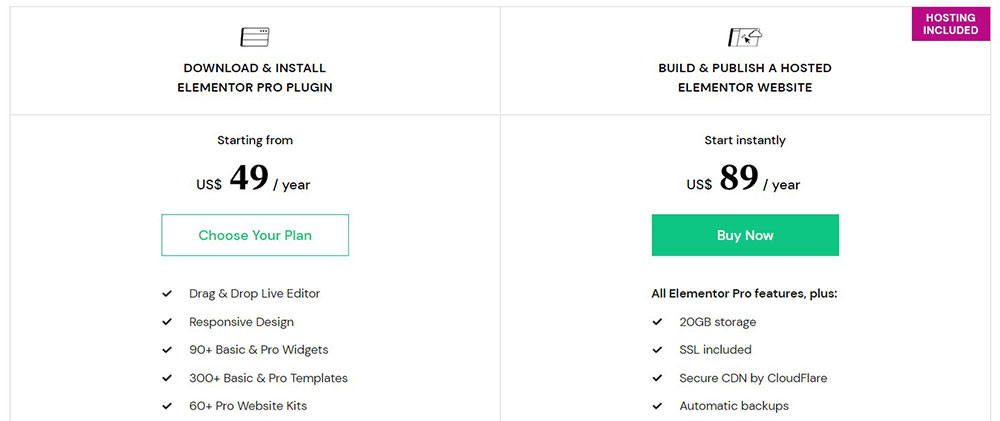
Only Elementor offers a completely free version and it’s surprisingly good. Even with this free plugin you can make awesome designs and use most of the basic widgets.
Here is a pricing list for those that want more out of their theme builder plugins:
- One site: $49 per year
- 25 sites: $199 per year
- 100 sites: $499 per year
- 1,000 sites: $999 per year. For most users, this means unlimited websites. Elementor set a limit to prevent license abuse.
Elementor only offers annual subscriptions. That means that if you purchase a paid plan, you will have to renew it every year.
However, by doing this you will continue to receive updates and tech support. It also allows you to add new Elementor Pro Widgets.
Divi
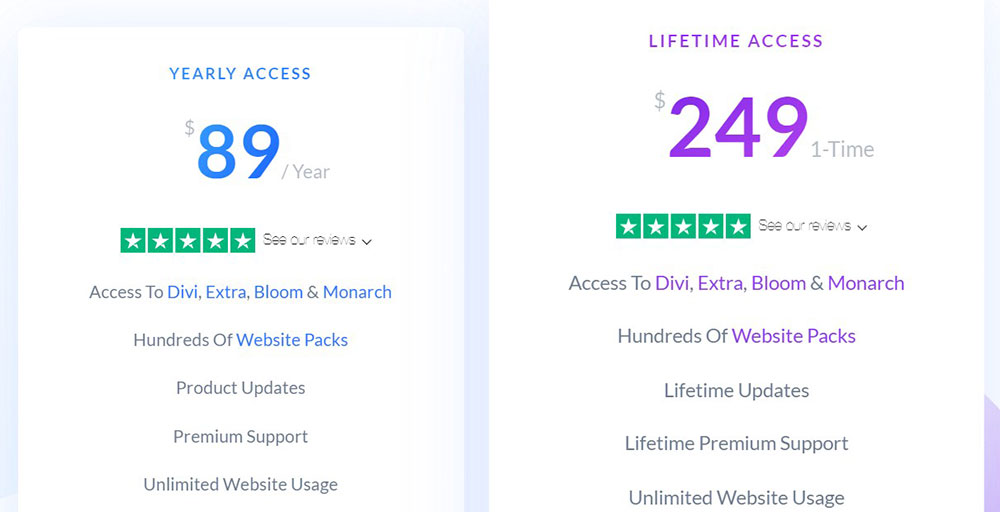
People that buy the Elegant Themes membership will receive access to Divi Builder. There are two different price levels:
- $67. Unlimited websites and one year of support and updates.
- $187. Unlimited websites with lifetime support and updates.
Divi Builder does not offer a free version. However, there is a demo version that you can try before you decide to buy it.
Be Builder
BeBuilder charges a flat fee. It is a one-time payment of $59 and gives you lifetime access to all BeBuilder's features.
There are no hidden costs or additional premium features. Included in the price are:
- Muffin Life Builder
- Muffin Builder 3, a backend page builder
- Muffin Woo Builder
- Over 600 prebuilt websites
Muffin provides excellent value for money.
Support
Elementor
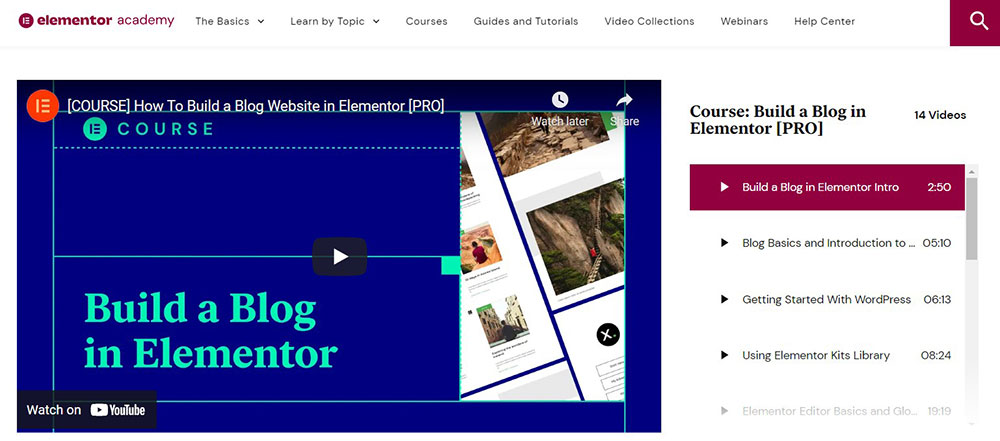
Customers with a paid plan can count on 24/7 support via tickets. Users also have access to a detailed public knowledge base.
They can find out how to use the most important features, how to deal with common issues, and how to solve various problems.
Elementor maintains an official Facebook page. The large community of 98,000 followers is always ready to provide tips and suggestions.
That is an invaluable source of information, even for those using the free version.
Divi Builder
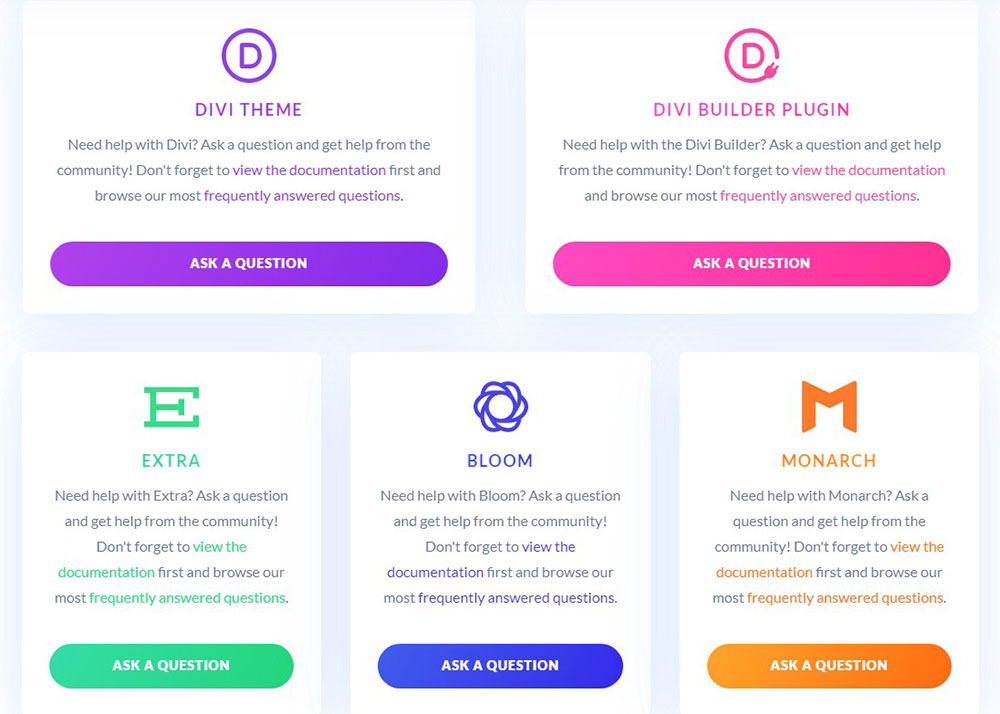
The Divi builder is included in the Elegant Themes theme. Licensees of the theme get 24-hour premium support.
Elegant Themes provides live chat support via Intercom, a popular support system. That is an important feature.
Not many WordPress themes provide that kind of help.
Besides the live chat, you can also get support through the classic forum support system. This is a community-based support, rather than support from the company itself.
Users can also access the extensive knowledge base documentation. Using this, you can find the answer to your questions yourself.
Finally, the official Divi Theme Users Facebook group has around 65,000 members and is a great source of help.
BeBuilder
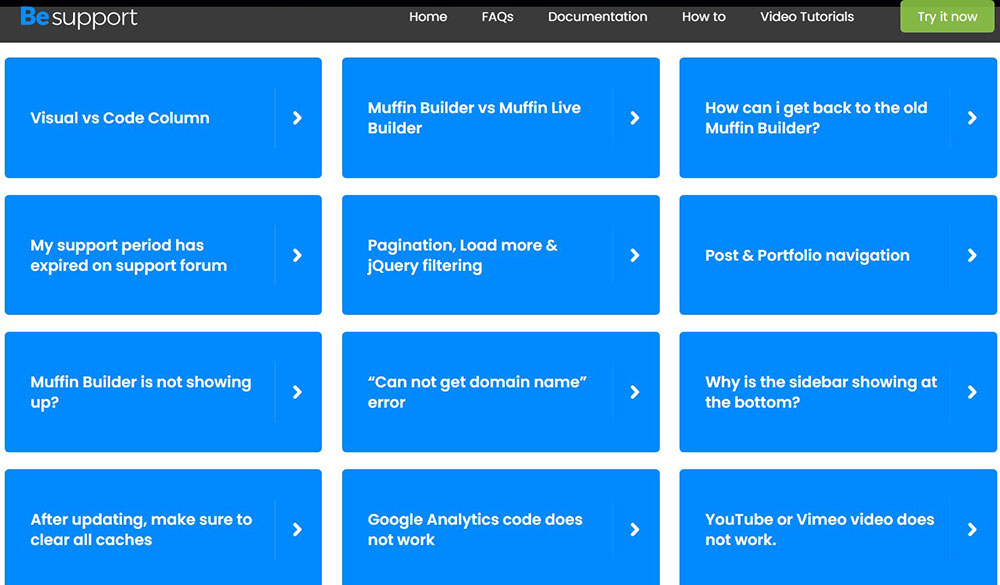
Muffin Live has excellent support, 24 hours a day and seven days a week. You can submit a ticket and you will receive an answer within a day.
The page builder itself has a FAQ section and a guidebook that shows how to use Muffin Live's options. Another option is to visit the support forum where users are ready to help you with your questions.
FAQ about the Elementor vs Divi vs BeBuilder
How easy is it to use Elementor, Divi, and BeBuilder?
Each of these WordPress page builders offers drag-and-drop functionality that simplifies website creation. Elementor and Divi provide intuitive interfaces and a visual editor for real-time changes, while BeBuilder is also designed for ease of use with a focus on responsive design.
Can you create a responsive website with Elementor, Divi, and BeBuilder?
Absolutely. Responsive design is a core feature for all three builders. Elementor and Divi offer tools to preview and tweak designs for mobile, tablet, and desktop. BeBuilder ensures that your website adjusts seamlessly across different devices, which is crucial for user experience (UX).
What kind of templates are available in Elementor, Divi, and BeBuilder?
All three provide extensive template libraries. Elementor boasts a variety of pre-designed templates. Divi offers unique Divi layouts, and BeBuilder comes packed with customizable templates. Each builder gives you the ability to modify and personalize templates to match your brand's aesthetic.
How customizable are the widgets in Elementor, Divi, and BeBuilder?
Custom widgets are a notable feature in these page builders. Elementor and Divi offer a wide array of configurable widgets to enhance your site. BeBuilder also includes a robust set of content modules that provide flexibility in layout and interactivity on your webpage.
Do Elementor, Divi, and BeBuilder support third-party plugin integration?
Yes, they do. Plugin compatibility is crucial for extending the functionality of any website. Elementor and Divi support a variety of third-party integrations, while BeBuilder ensures seamless integration with popular WordPress plugins, which can aid in SEO optimization, performance enhancement, and more.
What are the performance metrics of Elementor, Divi, and BeBuilder?
Web performance metrics, including website speed and load times, are key considerations. Elementor and Divi have optimized their codebase to minimize impact on performance. BeBuilder is also designed to be lightweight and efficient, ensuring fast load times to boost SEO rankings.
Are there SEO tools available in Elementor, Divi, and BeBuilder?
SEO optimization tools are integrated into all three builders to help enhance your site’s visibility. Elementor incorporates features to improve SEO strategy, while Divi has built-in tools for keyword optimization. BeBuilder** supports SEO best practices to ensure your content is easily discoverable.
How do Elementor, Divi, and BeBuilder handle updates and support?
All three builders offer regular updates and robust support. Elementor and Divi have active communities and comprehensive support systems. BeBuilder also provides frequent updates and support to address user needs, ensuring that your WordPress themes and functionalities stay current and secure.
Can you use custom CSS with Elementor, Divi, and BeBuilder?
Yes. Custom CSS control is available in Elementor, Divi, and BeBuilder. This allows advanced users to further customize their sites beyond the built-in options, providing flexibility and precision in design. Each builder supports extensive CSS tweaks to match stylistic preferences.
Are there built-in A/B testing features in Elementor, Divi, and BeBuilder?
A/B testing features are crucial for optimizing conversions. Divi offers built-in A/B testing tools that allow detailed performance analysis. While Elementor and BeBuilder might not have native A/B testing, they support third-party tools to conduct experiments and improve site performance.
Conclusion
Choosing the right page builder for your WordPress site is more than a matter of preference—it's about aligning with your design goals and user needs. In the debate of Elementor vs Divi vs BeBuilder, each tool offers a unique set of features that cater to specific requirements, from drag-and-drop functionality to responsive design.
As we explored, these builders provide advanced capabilities like custom widgets, template libraries, and plugin compatibility. Every option focuses on creating a seamless user experience while ensuring your site remains agile and SEO optimized.
By incorporating visual editors, A/B testing, and third-party integrations, they transform complex design visions into functional, beautiful websites.
Whether you're enhancing website speed, tweaking CSS, or diving into detailed performance metrics, Elementor, Divi, and BeBuilder stand as formidable choices for any web project. In conclusion, the ideal selection hinges on your specific needs—each option offering robust tools to elevate your web design endeavors.
If you enjoyed reading this article on Elementor vs Divi, you should check out this one about
using a WooCommerce page builder or this one with Elementor alternatives.
We also wrote about a few product comparisons like Elementor vs Beaver Builder, Elementor vs WPBakery, Elementor vs Wix, Elementor vs Oxygen, or Elementor vs Gutenberg.



